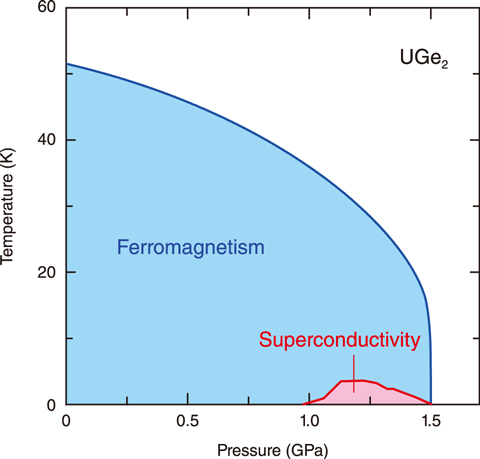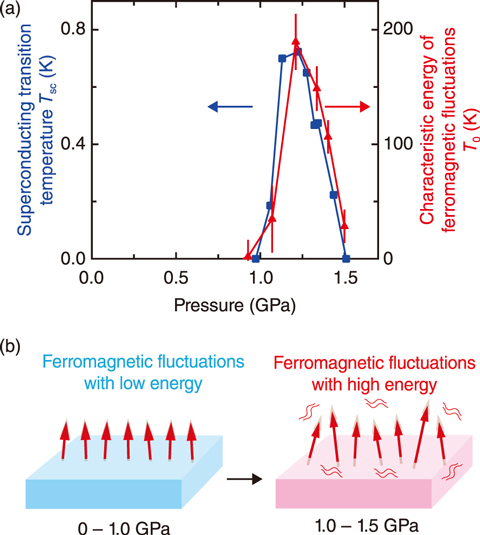
Fig.3-9 Temperature–pressure phase diagram of UGe2

Fig.3-10 Ferromagnetic fluctuations and superconductivity in UGe2
The electrical resistivity of a superconducting material drops to zero below the superconducting transition temperature Tsc. Applications of superconductivity, such as superconducting magnets used in various aspects of industry or medical services, have been developed. Generally, the superconductivity and ferromagnetism have been seen as competitive phenomena. The superconductivity is destroyed by the application of a magnetic field, thus representing a drawback in technological applications. A case study regarding this competitive nature on the uranium compound UGe2 is thus introduced.
UGe2 is a simple ferromagnet with a Curie temperature of 54 K at ambient pressure. Surprisingly, the superconductivity appears above 1 GPa, where the compound is still in the ferromagnetic state, as shown in Fig.3-9. Here, the superconductivity and the ferromagnetism coexist under high pressure. Although many experimental and theoretical studies have been done for UGe2, it is not clear why the superconductivity emerges in the ferromagnetic state.
To study the mechanism of the superconductivity in UGe2, a high-pressure apparatus was developed for magnetic measurements at high pressures up to 10 GPa. A high-quality single crystal sample of UGe2 was prepared by the Czochralski pulling method. The magnetization of UGe2 was measured at high pressure and the data was analyzed with spin fluctuation theory.
In uranium compounds, the 5f electrons are responsible for the magnetism and the superconductivity. In the ferromagnetic state, the magnetic moment of the 5f electrons are aligned in one direction. Meanwhile, the direction and size of the magnetic moments fluctuate due to the thermal energy. This is called “ferromagnetic fluctuations”. The characteristic energy of the ferromagnetic fluctuations T0 was examined. The effect of pressure on T0 was determined from the theoretical analysis of magnetic data. Above 1 GPa, the superconducting transition temperature Tsc increases until reaching a maximum at approximately 1.2 GPa, before decreasing again, as shown in Fig.3-10(a). A similar pressure dependence of T0 was also seen. This suggests a clear correlation between the superconductivity and the ferromagnetic fluctuations.
In conventional superconductors like lead (Pb) or tin (Sn), the superconducting pairs called “Cooper pairs” are formed through interactions between the electrons and the vibration of a crystal lattice named “phonons”. Instead, the ferromagnetic fluctuations may take an important role in the formation of the Cooper pairs in UGe2. Therefore, the superconductivity in UGe2 may belong to a new type.
These results may contribute to the understanding of the coexistence of the ferromagnetism and the superconductivity. The uranium ferromagnetic superconductivity is relatively stable in the high magnetic field when compared with conventional superconducting materials. An understanding of the mechanism of the ferromagnetic superconductivity could lead to the development of new superconducting materials, such as superconducting wires, that work stably in high magnetic fields.
This work was supported by the Japan Society for the Promotion of Science (JSPS) KAKENHI Grant-in-Aid for Scientific Research (C) (No.16K05463).
<Previous: 3-3 | Next: 4 Nuclear Science and Engineering Research>